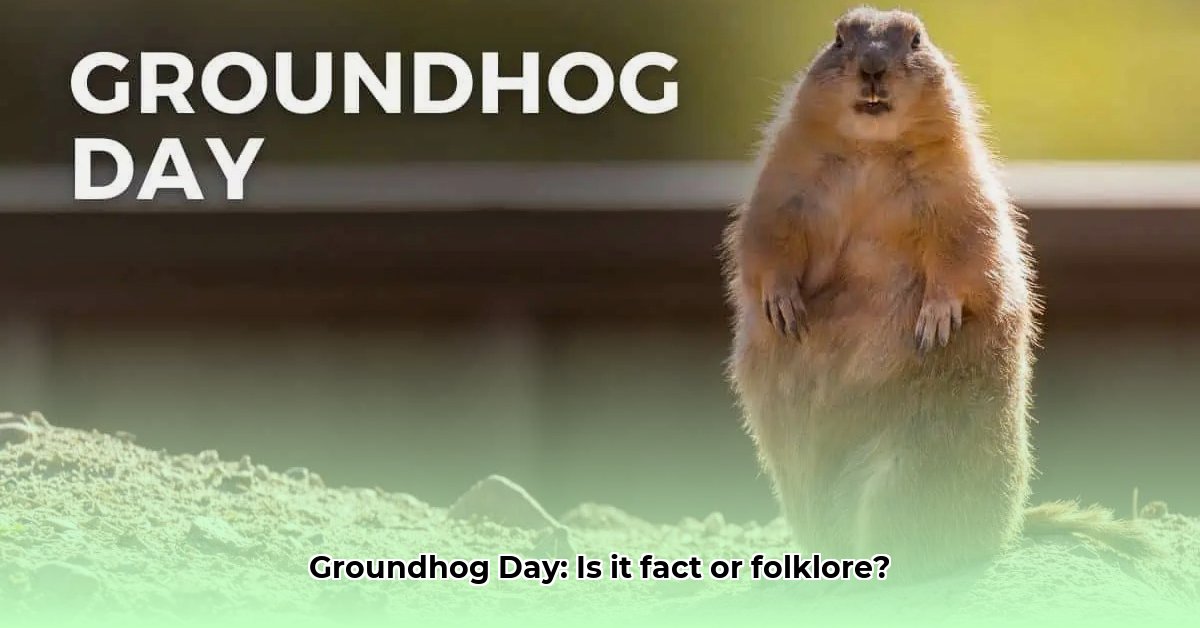
Groundhog Day: A Right Jolly Celebration
Right, so, let's chat about Groundhog Day. This whole idea of a furry little critter predicting the weather? It's a curious mix of old-world charm and modern shenanigans, isn't it? This tradition's roots likely stretch back to Europe, possibly linking to Candlemas, a Christian celebration, or even older pagan festivals like Imbolc—both focused on predicting winter's end. Imagine relying on ancient traditions to gauge firewood needs! But how accurate are these predictions, really? One might wonder if there's any scientific basis to such a seemingly whimsical tradition.
These customs journeyed across the pond to North America, particularly among Pennsylvania Dutch settlers. They seemingly swapped the European hedgehog or badger for a groundhog—a familiar creature. This cultural adaptation is fascinating. Did they simply decide, "Hey, this groundhog looks like a decent hedgehog substitute," or was it a gradual shift, a blend of old and new beliefs? A history professor could shed some light on that!
The core of Groundhog Day revolves around the weather prediction. The big question: will the groundhog see its shadow? If so, legend says we're stuck with six more weeks of winter. If not? Spring's just around the corner! It's a simplistic notion, yet fosters community, social bonds, and fun. It's a heartwarming event. And who doesn't appreciate lighthearted fun, even if the science is…flexible? After all, the groundhog doesn't hold a meteorology degree, does it?
The Pop Culture Phenomenon
Things drastically changed in 1993 with the classic film, Groundhog Day. It catapulted a regional event onto the global stage. Suddenly, reliving the same day repeatedly became a cultural touchstone, adding another layer of complexity to the event. It undoubtedly boosted Groundhog Day's profile. But did this popularity alter the original meaning? Some might argue it has, others that the film simply cemented its place in modern culture. Either way, it made Groundhog Day far more intriguing.
Modern Groundhog Day: Celebrations and Controversies
Today, celebrations range from small, local gatherings to massive tourist events, particularly around Punxsutawney Phil, the celebrity groundhog. It's undeniably become a commercial affair, attracting tourists and boosting local economies. This commercialization, however, is a double-edged sword. While promoting awareness, it also raises questions about compromising the tradition's original spirit. How do we balance economic benefits with preserving the event's authenticity? This is a pertinent question facing many cherished cultural traditions in our increasingly commercialized world.
Looking ahead, Groundhog Day's continued success hinges on finding that sweet spot—preserving the core folklore while embracing its evolution. It's a testament to cultural celebrations' enduring ability to adapt and thrive, even in unexpected ways.
A Global Look at Weather Forecasting Folklore
Groundhog Day's energetic chaos—the crowds, anticipation, Punxsutawney Phil's pronouncements—is distinctly American. But did you know its roots are shared with centuries-old practices worldwide? The answer reveals a fascinating tapestry of cultural beliefs intertwined with seasonal change.
Ancient Roots and Modern Manifestations
Many weather-predicting celebrations center on observing animals emerging from hibernation. Groundhog Day's link to Imbolc and Candlemas, ancient Celtic and Christian festivals, points to deep historical connections. These celebrations share a common thread: predicting spring's arrival. Yet the animal chosen and celebratory rituals vary significantly. How have these traditions adapted over the centuries to fit with evolving cultural beliefs? This is a question worth exploring further.
Variations on a Theme: Animals and Saints
In parts of Europe, hedgehogs take center stage; their behavior interpreted similarly to Punxsutawney Phil's. Others look to badgers or bears, the choice often reflecting local fauna. It's not solely about animals; many cultures incorporate saints into their weather prognostications. Saint-Medard's Day in France, for instance, focuses on weather predictions associated with the saint.
Celebrating Spring's Arrival: A Global Comparison
Let's compare key aspects of similar traditions:
| Tradition | Animal/Saint | Method | Prediction Outcome | Celebration Style |
|---|---|---|---|---|
| Groundhog Day (USA) | Groundhog | Shadow observation | Six more weeks of winter | Town festival, media coverage |
| Candlemas (Europe) | N/A | Candle burning; weather observation | Winter's length | Religious and cultural events |
| Hedgehog Day (Europe) | Hedgehog | Emergence from hibernation | Similar to Groundhog Day | Smaller, regional celebrations |
This diversity illustrates that while the principle—predicting winter's duration—might be similar, methods and celebrations are uniquely shaped by cultural context.
Beyond the Prediction: Cultural Significance
These traditions are more than quirky forecasts. They're communal events, opportunities to connect with history, nature, and each other. They reflect humanity's desire to understand and anticipate nature's rhythms—a desire as old as time itself. They're vibrant expressions of cultural identity, their evolution mirroring the changing tide of social values and beliefs. The continued relevance of these traditions is a testament to their ability to adapt and stay pertinent across generations.